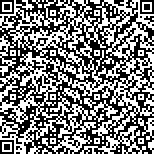| 摘要: |
| 尽管追光技术在现代舞台表演艺术
中发挥着至关重要的作用,但在我国传统戏
剧艺术中却很难见到。本文以此为出发点,
提出了几点可能存在的原因,并通过问卷调
查、现场采访和数据分析三种方式对其进行
了检验。结果表明:逐渐适应了变化剧烈的
舞台光环境的青年观众群体已逐渐成为传统
戏剧表演观众群体的主要组成部分,而传统
戏剧艺术较为平淡的舞台光环境效果已无法
满足此类群体的需求;同时,传统戏剧艺术
的表演过程中演员的走位灵活度较高,而普
通剧场的追光灯仍依靠人工操作,并且距离
舞台较远,致使舞台光环境效果的营造与舞
台剧情的表演常出现偏差。根据以上结果,
本文建议引入自跟踪技术,并调整追光灯的
点位,以此提升追光在传统戏剧艺术光环境
营造中的应用度,进而完善传统戏剧艺术光
环境营造的手段,以期创造出更加多彩的、
符合观众需求的光环境。 |
| 关键词: 剧场建筑 传统戏剧艺术 光环境 追光 自跟踪技术 |
| DOI:10.13791/j.cnki.hsfwest.20220212 |
| 分类号: |
| 基金项目: |
|
| Research on the Light Environment Construction of Traditional Drama Art: Taking TracingLight as an Example |
|
GU Hongnan,WU Qiming,CHEN Quanren
|
| Abstract: |
| The traditional drama art in China has a history of more than 2 000 years, and has
gradually evolved a Chinese opera library with five kinds of operas: Beijing Opera, Yue Opera,
Huangmei Opera, Pingju Opera and Henan Opera as the main body. During the early years of
theater buildings, the audience sat around the stage to enjoy performances, and they were able
to have close contact and communication with actors. Along with the development of the ages,
theater buildings have gradually substitute for theater buildings, and become the main places
for traditional theatrical performances. With the help of advanced stage lighting technology and
reasonable auditorium space form, a rich stage lighting environment can be created in theater
buildings. In the various lighting technologies used in theater buildings, chasing light has become
the most special lighting technology with its unique flexibility, strong light intensity, obvious
spot and easily adjustable light color. Although light-chasing technology plays a vital role in
other modern stage performing arts, it is rarely seen in our traditional theatre art. Based on
this, several possible reasons were put forward. Firstly, the audience of traditional drama art is
unevenly distributed in all ages, and the audience of diverse ages may have various acceptances
to the light environment with large changes in light and shade caused by light chasing. Secondly,
the performers in the traditional drama art walk flexibly, and the arrangement of the same play
changes frequently, so there may be some problems such as lighting deviation in the manual
lighting technology. Thirdly, in the common theater buildings, the lighting is often set up in the
lighting room at the back of the auditorium, which is far away from the stage, which may be
detrimental to the stage lighting environment of traditional drama art.
In view of the above questions, this paper designs three ways to test them: questionnaire
survey, on-the-spot interview and data analysis. Firstly, through the collation and reading of the
literature, it investigated the age distribution of the audience of various age groups in traditional
theatre art; then, it selected the classic play “Three Forks” as the research object, and investigated
the range of activities of the performers, the position of props, the way of driving the plot, etc. in
different versions of the research object. Then, this paper selected the more classic play “Three
Forks” in traditional theater art as the research object, and explored the range of activities of the
performers, the placement of props, and the way of driving the plot in different versions of the play;then, combined with the results of the research on the distribution of various age groups in the audience, a suitable group of people was selected to conduct
a survey and research to explore their acceptance of the play after the improvement of the stage light environment; finally, the Sichuan Opera Art Center
building in Chongqing was selected as the research object to explore the possible improvement methods of the chasing light technology. The results show that
young audiences who have gradually adapted to the drastic changes in the stage light environment have gradually become the main part of the traditional
theater performance audience, while the traditional theater art’s relatively bland stage light environment effect can no longer meet the needs of this group,
and most of these groups are negative to the “completely dark environment” of the play “Three Forks”, which is performed by the actors themselves. At
the same time, the actors in traditional theater present a wide range of activities and high flexibility when performing, and in different versions of the same
play, different actors will arrange the play differently according to their own characteristics. Therefore, the performance presents a large uncertainty, while
the chasing lights in ordinary theaters still rely on manual operation and are far away from the stage, making the creation of the stage light environment
effect and the performance of the stage plot often deviate. According to the above results, this paper intends to break the barrier between the two mature
technologies of self-tracking technology and chasing light technology, and realize the perfect cooperation between chasing light and actors by wearing
positioning tags on actors and setting positioning base stations on the stage; and adjust the point of chasing light from the chasing light room at the back of
the audience hall to the first surface light bridge closer to the stage, so as to enhance the application of chasing light in the creation of traditional theatrical art
light environment in order to improve the application of chasing light in the creation of traditional theater art light environment, and thus improve the means
of creating traditional theater art light environment, in order to create a more colorful stage light environment that meets the needs of the audience. |
| Key words: Theatre Buildings Traditional Drama Art Light Environment Tracking Light Self-Tracking Technology |


